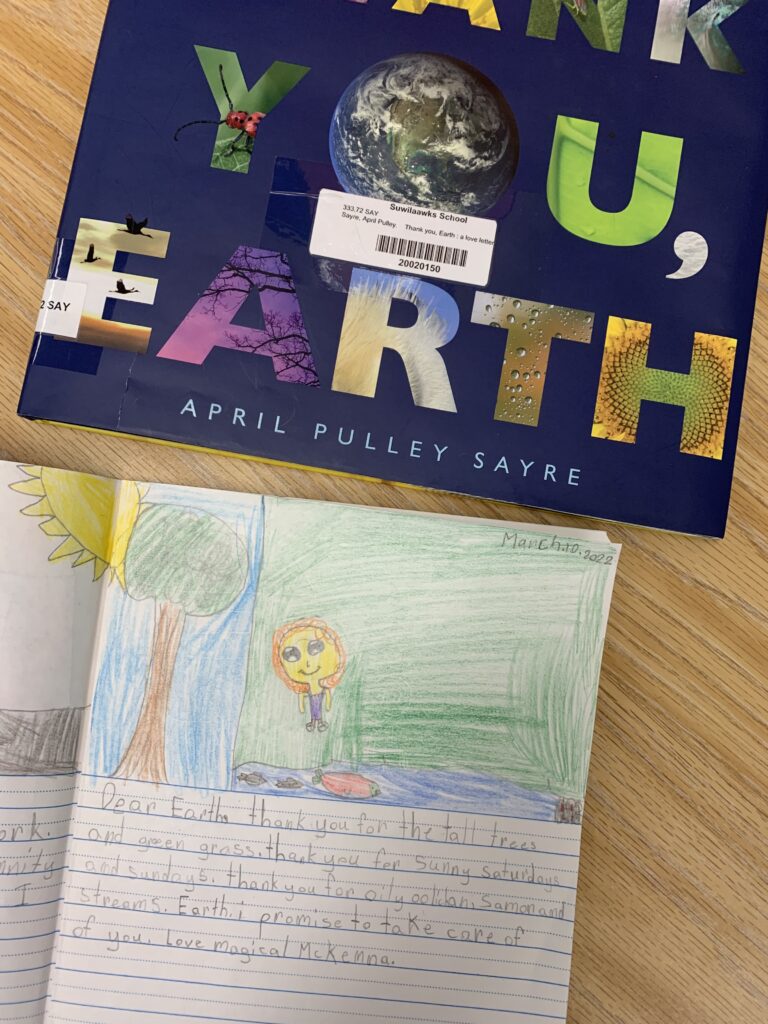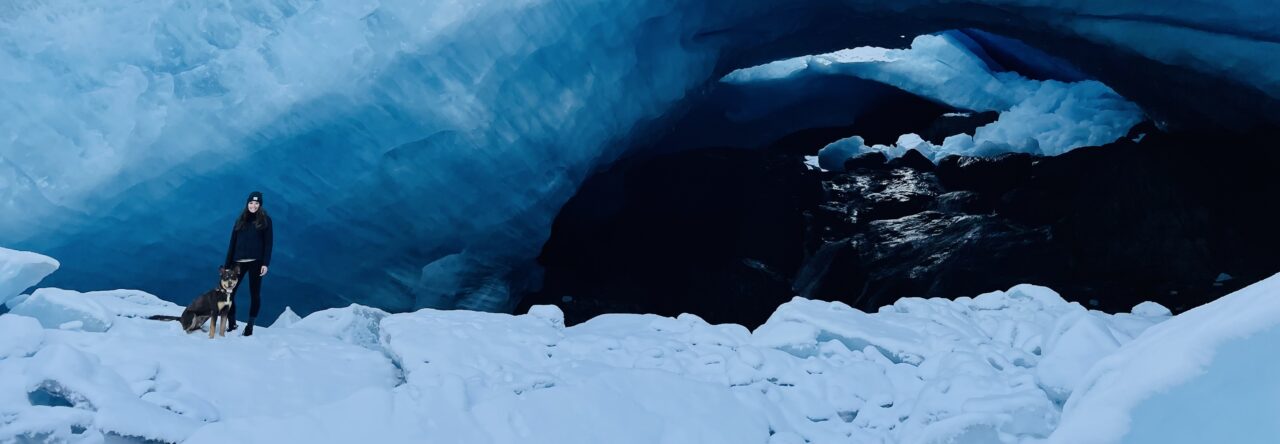Lesson Part 1: To end our unit on the life cycle of salmon, we focused on the effects that humans have on the land, and wildlife – specifically salmon. We talked about different factors that contribute to pollution of the salmon’s environment. To get students interested (hooked) we went on a mini field trip. We handed out worksheets to the students and did a “pollution scavenger hunt”. Everytime they saw a piece of trash, piles of leaves, discarded masks etc. they gave a tally mark. We stopped and looked at drains and talked about where the water leads and what happens when pollution infiltrates those water systems.
I gave students a sheet that listed pollution you might see while out on a walk in your neighbourhood. Students were put into pairs, given worksheets and clipboards and we headed outside for a walk around the block. I told students to think about their sheets like a scavenger hunt. Each time they found an item on the list they were to add a tally mark. As you can see in the picture below, something unexpected that students saw laying on the streets, sidewalks and fields were disposable masks.
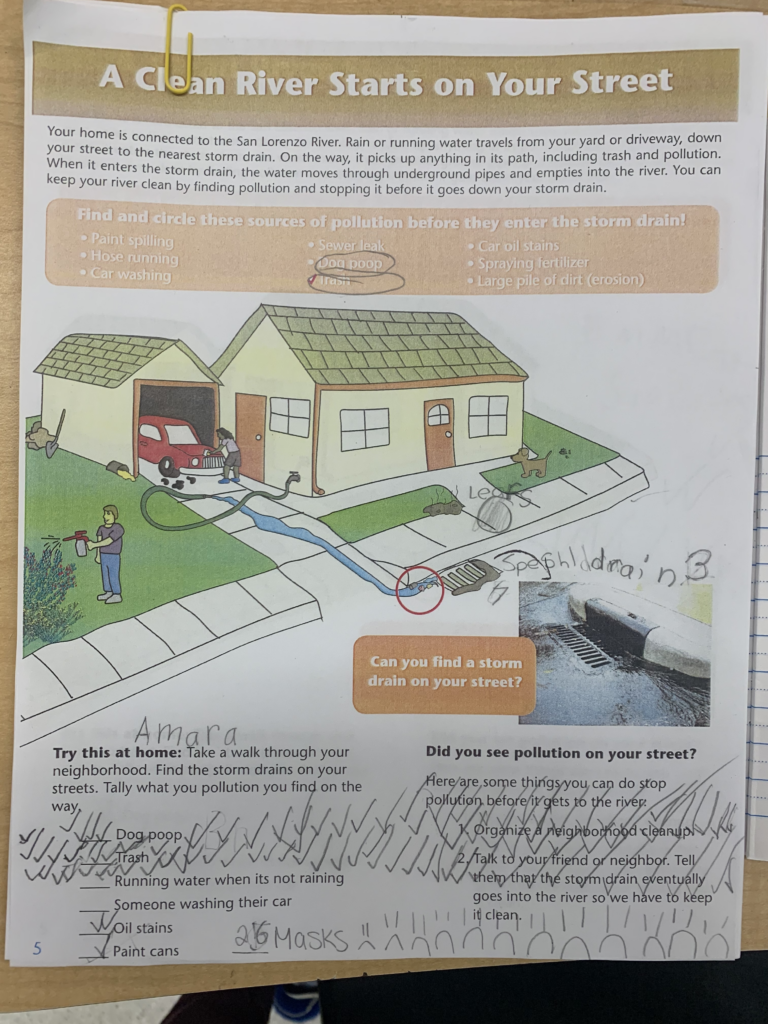
We put specific emphasis on looking at drains (most of which had a salmon symbol on them) and looked to see if they were being blocked by any pollution such as piles of leaves or trash.
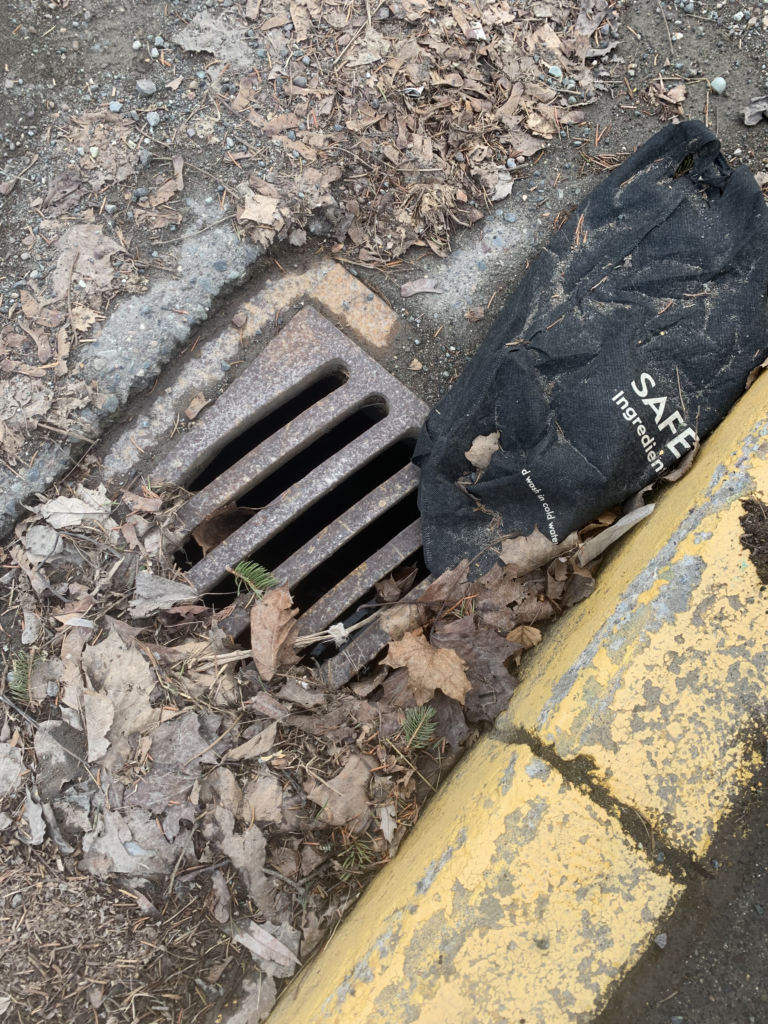
Lesson Part 2:
Following our block walk, we came back to the classroom and had a discussion about the different things we saw along our walk and the impact we thought those items such as oil cans, an assortment of trash, piles of leaves, disposable masks etc. would have on the local water systems, fish and wildlife. Students were instructed to do a journal share on how they felt about what they saw and one thing they will do going forward.

Lesson Part 3:
We couldn’t leave all the garbage that we had noticed just laying where it was so for our next lesson we decided to take action and help clean the community. We contacted the school custodian and were able to borrow some trash pickers and had a discussion with students on what was appropriate to pick up. If they were unsure about any of the items they were to ask an adult. This went extremely well! The kids were so excited to use the trash pickers and were running to pick up pieces of trash. There was a lot of excited energy and good conversation throughout the walk.
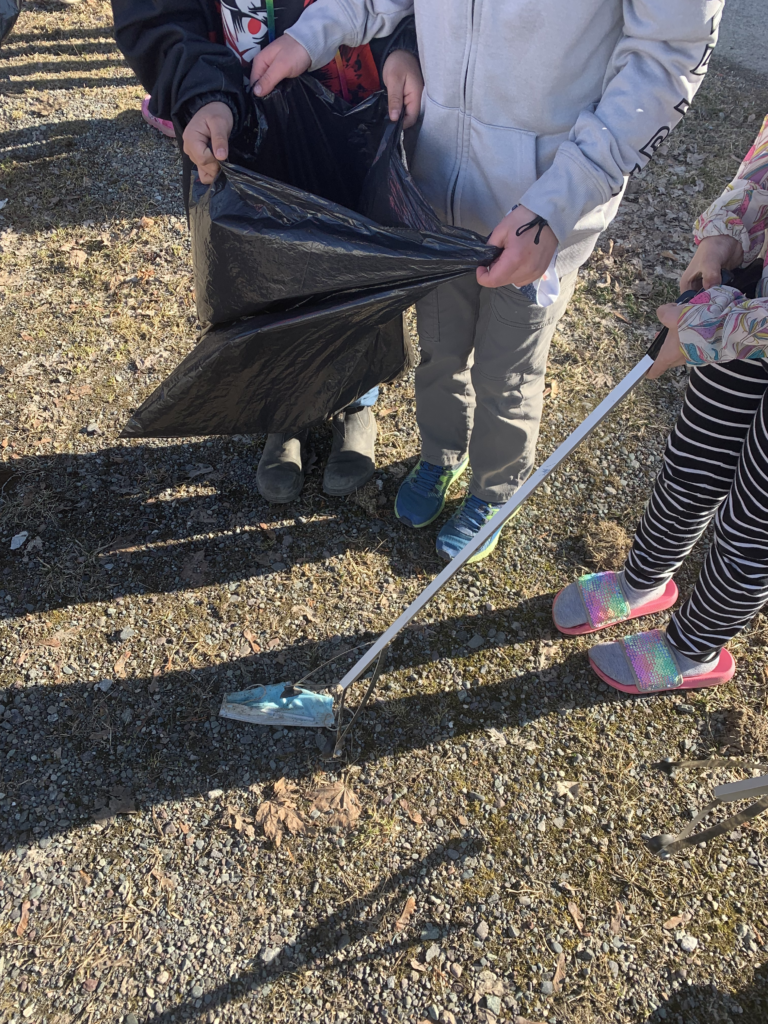

Lesson Part 4:
To wrap up our unit I read the story “Thank You, Earth” to the class. The story is written as a thank you letter to the earth. Thanking it for everything that it gives us. The book used a lot of alliteration so it was a great opportunity for a cross curricular lesson. We talked about what alliteration is and I had students give a thumbs up anytime they heard alliteration throughout the reading of the story. Following the book, students wrote their own thank you letters to the earth that contained alliteration. I was very pleased with how engaged students were with this lesson and how excited they were to write their letters.
